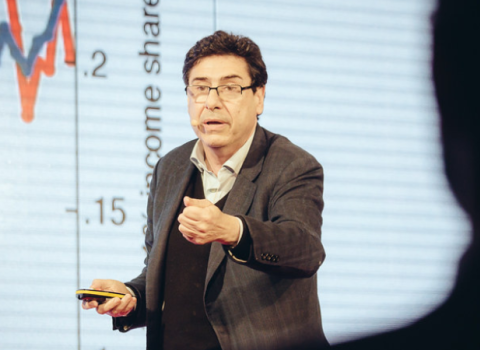The ELECTRODE project has been awarded an ERC Starting Grant of EUR 1.5 million, or nearly NOK 16 million. The European Research Council (ERC) provides start-up support for promising scientific projects.
The research is interesting on its own, as basic research, but can also be useful because it allows for better use of renewable energy.
“In general, we try to solve problems related to limitations on mass transport in fuel cells. We’ll use 3D printers to create porous photopolymer structures that are completely defined by a computer model. In addition, they remain stable when we process them into carbon,” says Jan Torgersen, an associate professor at the Department of Mechanical and Industrial Engineering at NTNU.
While the project’s basic research may be a little difficult to understand, it’s clear that the research can be useful since it can help in developing far more efficient methods for storing renewable energy.
“This means that we may be able to use CAD design in electrochemistry, which gives us many opportunities to increase the effect of energy conversion,” Torgersen said.
More efficient energy storage
More efficient storage is especially important as society tries to phase out fossil fuels, since renewable energy production cannot be regulated as easily as burning oil or gas.
The energy that comes from wind power and hydropower is intermittent. To use as much energy as possible from these sources, we need to be able to store the energy from wind or hydropower plants when they generate more energy than what we can use at that time.
This exact situation can happen when there’s a lot of wind at night, for example, and energy demand is low. In that case, we need to find a way to store the energy so we can use it when wind isn’t blowing, or when hydropower reservoirs are low because of little rainfall.
Storing energy in electrochemical fuels such as hydrogen is a good alternative to batteries, since batteries have their limitations in how much electrical energy can be stored in one place — a quality that energy researchers call energy density.
This is where the ELECTRODE project comes in, with its goal to increase the effect of fuel cells. The results can give us smaller appliances with more power and better energy conversion efficiency, Torgersen says.
Optimizing fuel cells
A promising alternative for storing and transporting renewable energy are hydrogen and hydrogen-based synthetic fuels that can be converted into energy when and where we need it, Torgersen says.
Fuel cells are alternatives to regular batteries. But the technology has limitations related to how efficiently the substances in them move in the cells. The ELECTRODE project wants to look at this more intensively so they can hopefully do something about it.
“An optimized structure can mean less energy loss when we need high power from a fuel cell,” says Torgersen.
Carbon-based compounds can work in fuel cells, but thus far they can’t be defined from a CAD model.
International cooperation
A project like this is more than just the efforts of a single individual, of course. Torgersen is an expert in 3D printing based on photopolymers. But he is not an expert in electrochemistry and needs to work with researchers such as Robert Bock and Odne Burheim, who are a postdoc and professor respectively from NTNU’s Department of Energy and Process Engineering.
Torgersen is also collaborating with laboratories where he has previously work, including the Nanoscale Prototyping Laboratory at Stanford University, led by Professor Fritz Prinz, and the Additive Manufacturing Technologies group at Vienna University of Technology, led by Professor Jürgen Stampfl.
The project has applied for five years of support.
This article was first published on 3 September by NTNU.





 A unique international forum for public research organisations and companies to connect their external engagement with strategic interests around their R&D system.
A unique international forum for public research organisations and companies to connect their external engagement with strategic interests around their R&D system.